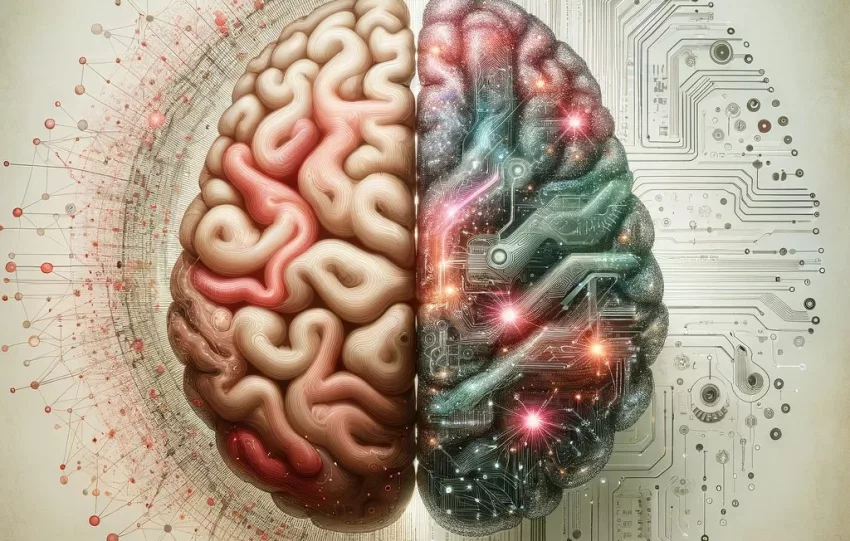Technoplasticity and Neuroplasticity. These two profound, transformative forces are currently reshaping our world, poised to define the course of human development and progress in the coming years. While technoplasticity represents our increasing ability to adapt to and shape technology, neuroplasticity underlines the malleability of the human brain in response to experiences and learning. In this article, we will explore the interplay between these two dynamics and their collective impact on the future of the world.
Human neuroplasticity compares with emerging technoplasticity in AI systems.
Technoplasticity: Our Ever-Adapting Relationship with Technology
Technoplasticity, a concept encompassing the adaptability and responsiveness of society to technological advancements, is redefining the way we live, work, and interact. As technology evolves at an unprecedented pace, our ability to embrace and harness these changes is a testament to our technoplasticity.
The rapid advancement of technology has transformed nearly every facet of human existence. From the advent of the internet to the rise of artificial intelligence, integrating these tools and innovating with them has led to profound developments in fields like medicine, transportation, communication, and more. Indeed, our adaptability to these technological shifts has been nothing short of remarkable. And in the age of technoplasticity, adaptability is a highly sought-after skill. The Adaptability Quotient (AQ) measures an individual’s ability to learn, unlearn, and relearn in response to evolving technology. As the demand for AQ rises, education and professional development are shifting focus towards fostering this critical attribute.
The rise of the gig economy is a prime example of how technoplasticity has redefined work. Individuals can now navigate a dynamic job market, adapting to new skills and roles as technology and consumer demands shift. This new world of work has both liberated and challenged workers, illustrating the potential and pitfalls of technoplasticity.
Neuroplasticity: The Endless Potential of the Brain
Neuroplasticity is the brain’s remarkable ability to rewire and adapt in response to experiences, learning, and environmental changes. This capacity, once thought to decline significantly in adulthood, is now recognized as a lifelong phenomenon.
The notion that learning stops after formal education is outdated.
Neuroplasticity tells us that the brain remains malleable throughout life. This revelation encourages individuals to adopt a growth mindset, emphasizing continuous learning and skill acquisition. For individuals recovering from brain injuries and trauma, neuroplasticity has offered new hope. Rehabilitation therapies that harness the brain’s plasticity enable remarkable recoveries and have opened doors for those who were once considered incurable.
Of course, as with all scientific breakthroughs, neuroplasticity holds the potential to conquer new frontiers in human intelligence. It allows for the enhancement of cognitive functions, using a variety of technologies such as brain-training apps, neurofeedback techniques, and cognitive enhancement drugs. All of these are part of a burgeoning industry that aims to tap into the untapped potential of the human mind.
The Intersection of Technoplasticity and Neuroplasticity
The important thing to understand is that technoplasticity and neuroplasticity are not separate forces. In fact, they are deeply interconnected, shaping and reinforcing each other in many ways.
Blended Learning and Beyond: The digital age has transformed education. Blended learning models, which combine traditional classroom instruction with online resources and interactive technologies, leverage both technoplasticity and neuroplasticity. They enable students to engage with diverse learning tools and adapt to their individual learning styles.
Brain-Computer Interfaces: The merging of technology and neuroscience is exemplified by brain-computer interfaces (BCIs). BCIs allow the human brain to interact directly with digital systems. This symbiotic relationship between the mind and machine amplifies the possibilities for both technoplasticity and neuroplasticity, revolutionizing fields like medicine, communication, and entertainment.
Redefining Experiences with Augmented Reality (AR) and Virtual Reality (VR): AR and VR technologies immerse users in interactive, simulated environments, offering new platforms for learning and entertainment. By capitalizing on neuroplasticity, these technologies adapt to users’ reactions, creating personalized experiences that enhance cognitive engagement.
Challenges and Concerns
While the confluence of technoplasticity and neuroplasticity holds immense promise, it also raises concerns about the direction we are headed. We must navigate these challenges as we shape the future of the world.
Privacy, Consent, and Control: The integration of technology and the human brain through BCIs and other interfaces demands stringent ethical considerations. Questions of privacy, consent, and control over one’s neural data are paramount. As we enhance our brains, we must remain vigilant in protecting our autonomy and individual rights. Read more in Mind Your Neurorights.
Digital Dependence and Cognitive Fatigue: Our increasing reliance on technology, from smartphones to AI-driven decision support systems, has raised concerns about cognitive fatigue and information overload. Striking a balance between leveraging technology for productivity and maintaining cognitive well-being is a pressing challenge.
Socioeconomic Disparities, a.k.a. the AQ Gap: While technoplasticity has created opportunities for some, it has also exacerbated socioeconomic disparities. Those who struggle to adapt to rapidly changing job markets may find themselves marginalized. Ensuring that everyone can develop their Adaptability Quotient is a crucial societal challenge.
The interplay between technoplasticity and neuroplasticity is redefining the future of the world. As we continue to adapt to technological advancements, our brains evolve in tandem, unlocking new frontiers of human potential. This dynamic relationship has the potential to drive extraordinary progress in fields like education, medicine, and communication, while also posing significant ethical and societal challenges. The key to a successful future lies in our ability to harness these forces responsibly and with a keen eye on the values and principles that guide us. In doing so, we can embrace a future that is shaped by both technology and the limitless potential of the human mind.
____________
Written By: JK Pandey





